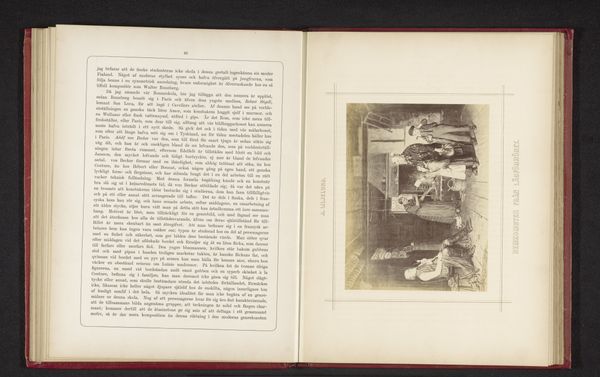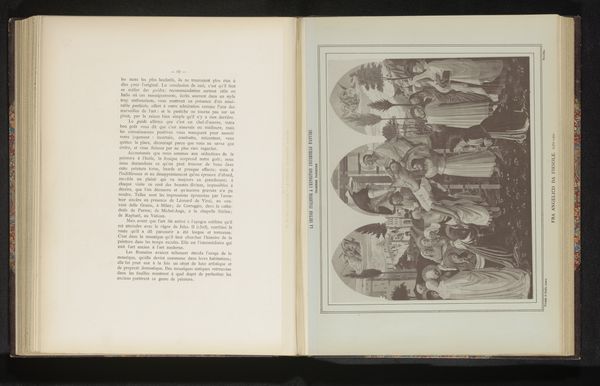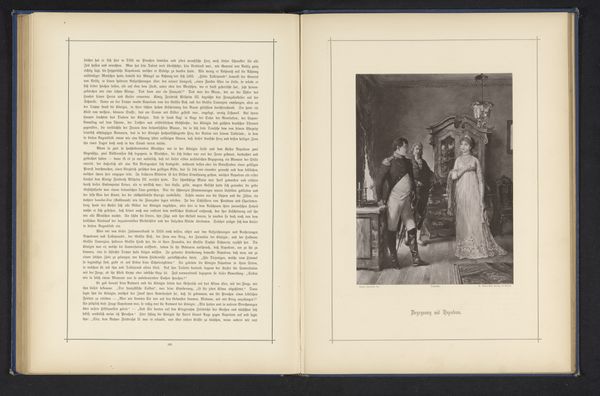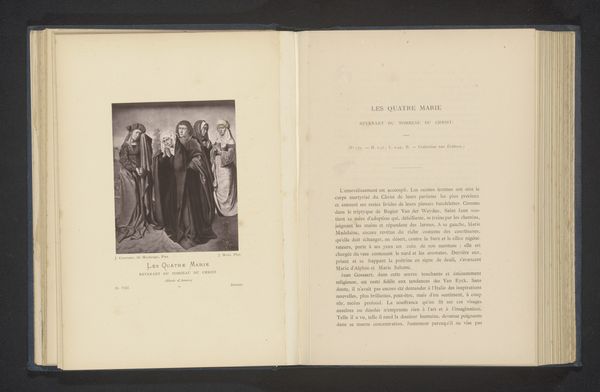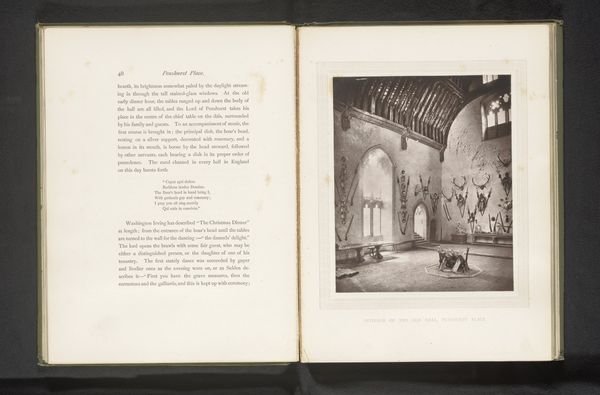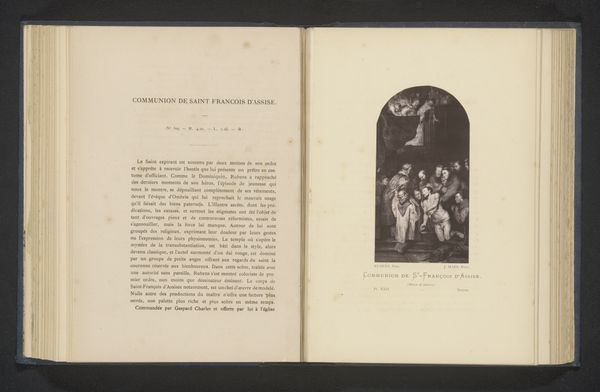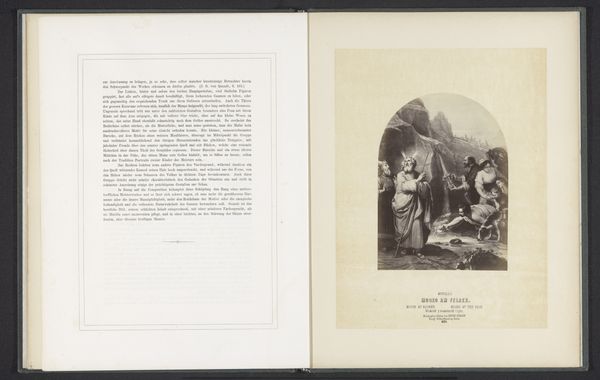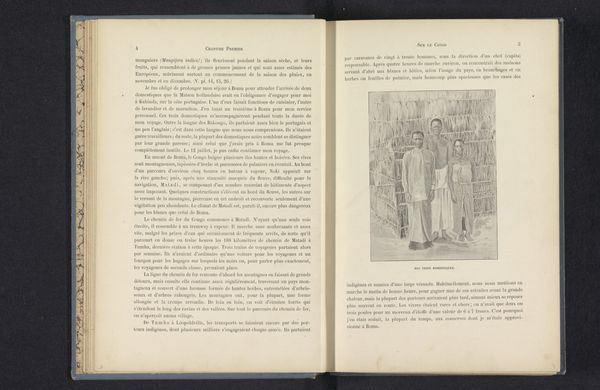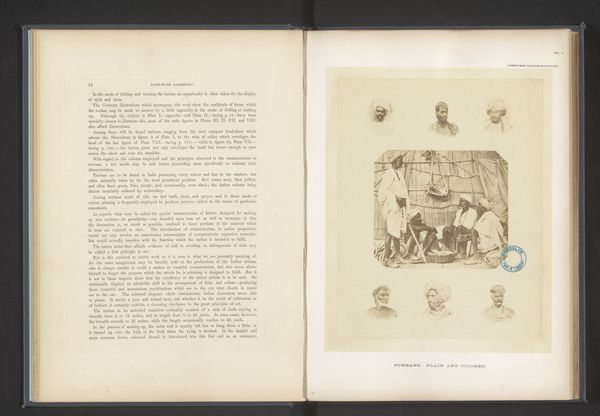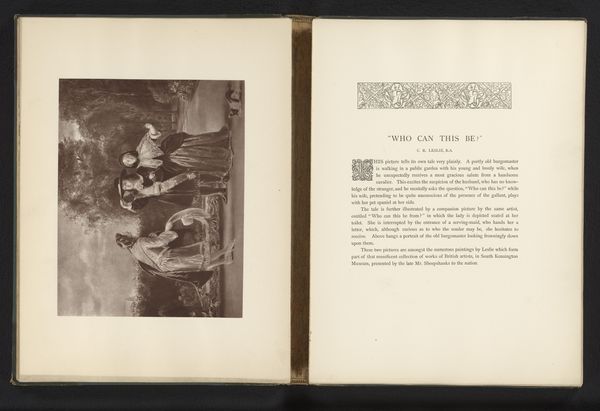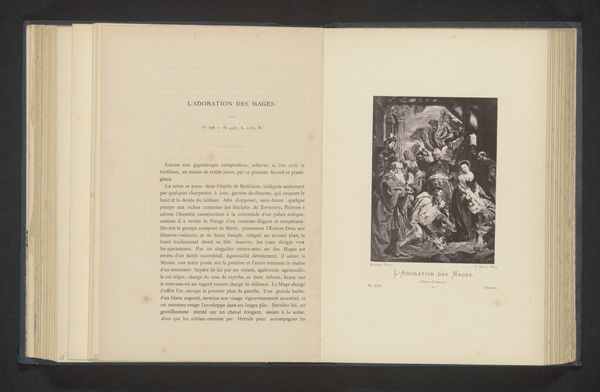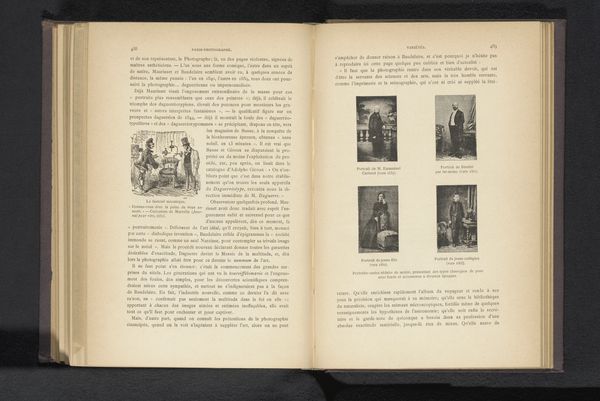
Fotoreproductie van een schilderij van Napoleon Bonaparte bij het graf van Frederik II van Pruisen before 1883
0:00
0:00
Dimensions: height 220 mm, width 163 mm
Copyright: Rijks Museum: Open Domain
Curator: Here we have an aged photogravure—a photographic reproduction, actually—depicting Napoleon Bonaparte at the tomb of Frederick the Great. The image predates 1883. It's fascinating how photography becomes a tool to disseminate paintings depicting historical encounters. Editor: It does strike a somber chord, doesn't it? The high contrast and arched ceiling contribute to an almost subterranean atmosphere, and all this texture screams age. The choice of material—aged paper for the print—emphasizes the pastness of the depicted event and creates a strong sense of gravitas. Curator: Indeed. We're witnessing a visual echo of power meeting mortality. Napoleon, an emblem of revolutionary fervor, stands before Frederick’s tomb, a figure of the old Prussian regime. The moment speaks volumes about ambition, legacy, and the transient nature of earthly dominion. Considering the historical context, it reflects upon the social upheavals of Europe at the time, and power struggles. Editor: And yet, looking at the quality of the reproduction, the layers of mechanical processes involved—photography reproducing a painting, printed on paper for mass distribution—underscore a shift in how history is made and consumed. It is interesting to note that history painting, so en vogue at the time, relied increasingly on reproducible technologies. Curator: Exactly, the print makes history more accessible and transforms historical figures into almost mythic characters, fueling public imagination and reinforcing nationalist narratives. Furthermore, it seems to subtly investigate concepts of masculinity and power through the careful arrangement of figures. Editor: Agreed. Thinking about the materials and their transformation through technological reproduction, the availability of art shifts—a democratization of sorts facilitated by these very processes, altering the traditional hierarchies of art consumption. Curator: What the work shows is how photography allows history painting to continue evolving within broader sociopolitical circumstances of the period. This piece, reproduced mechanically, still serves its purpose, but through very different modes. Editor: Looking at this I have to recognize how the industrial means behind this "Fotoreproductie" changed access to images as physical objects and affected art consumption, even if it keeps representing old, tired subjects of domination. Curator: Ultimately, it allows us to think about our relation with History—big 'H'—, particularly how events, individuals and social structures are turned into consumable items for reflection and awe. Editor: Agreed. The mechanical creation and reproducibility of art and images certainly revolutionized how people perceive themselves as historical actors.
Comments
No comments
Be the first to comment and join the conversation on the ultimate creative platform.
